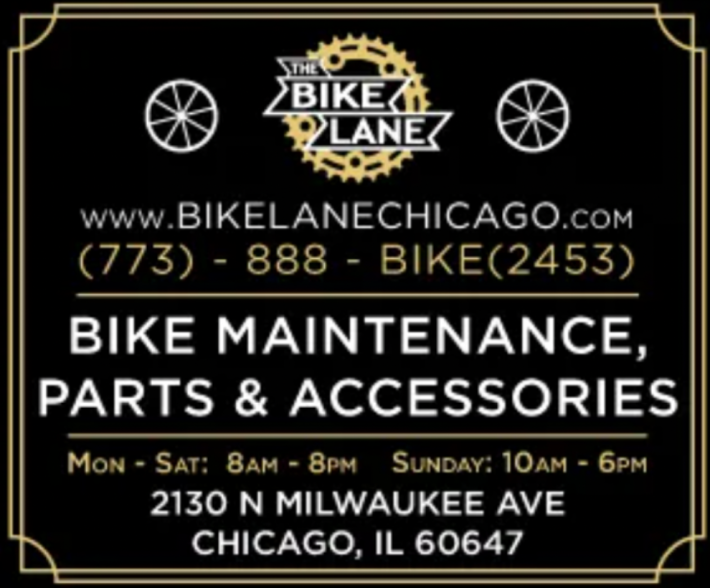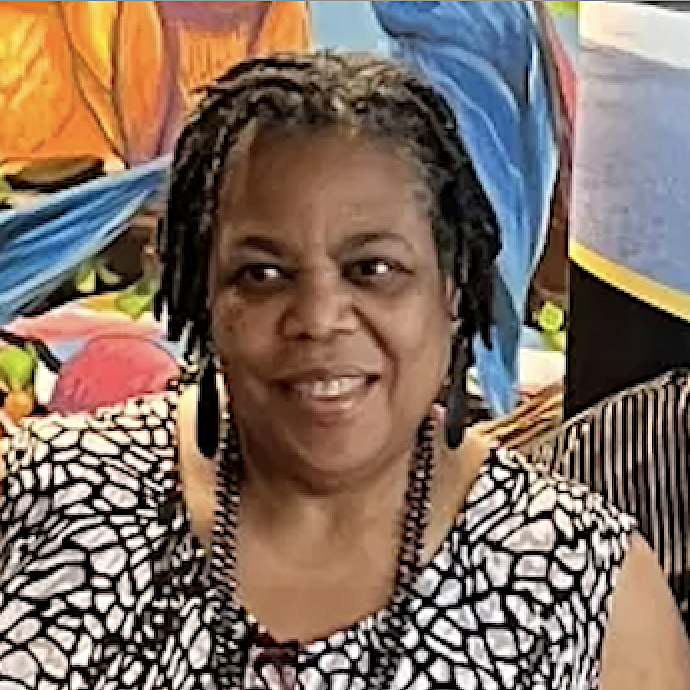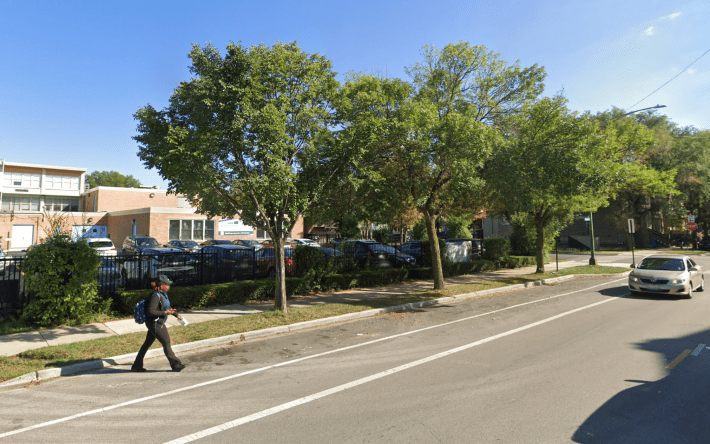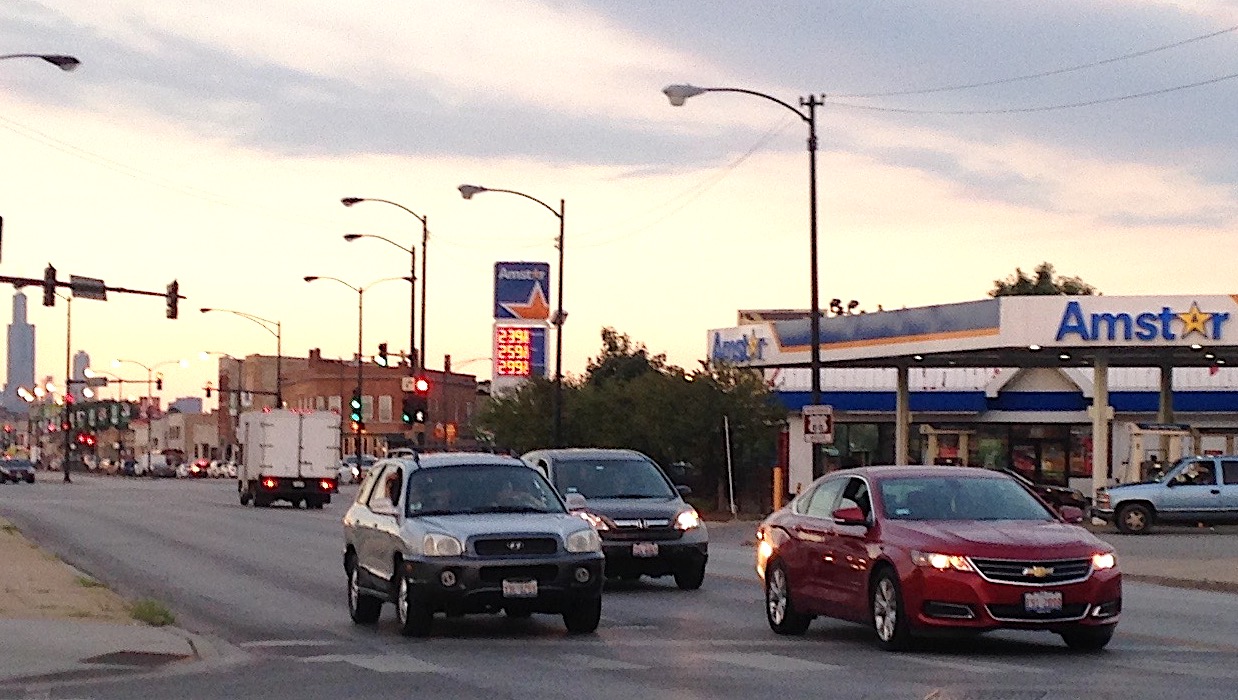
(This post includes reporting by Cameron Bolton, with additional commentary by John Greenfield.)
Rochelle Jackson, chair of the North Lawndale Community Coordinating Council’s transportation committee, is a lifelong resident of that neighborhood, who has advocated for sustainable transportation since 1985.

At the time, the CTA started reducing bus service on the West Side as part of budget cuts. Jackson says she knew that most people in the area couldn't afford cars, which is why she took up the fight for better conditions for riding transit, walking, and biking.
The NLCCC is part of a coalition of community, sustainable transportation, and environmental advocacy organizations in favor of lowering Chicago's default speed limit to from 30 to 25 mph. Peer cities like New York, Boston, Seattle, and Portland have had this speed limit for years, and have reaped major safety benefits. For example, in NYC the policy has contributed to a 23 percent drop in annual pedestrian deaths, and the city's lowest pedestrian fatality rate in 100 years. That's not surprising, because a National Traffic Safety Board report found that when a motorist hits a person at 40 mph, the pedestrian will almost alway die, but at 20 mph the person will almost always survive the crash.

On October 21, the Chicago City Council's Committee on Pedestrian and Traffic Safety passed an ordinance for the 25 mph speed limit. A final vote by the full Council is expected later this year.
Streetsblog caught up with Jackson to ask for her perspective on why the NLCCC supports this proposal. The following transcript has been edited for length and clarity.
Cameron Bolton: What's your background with sustainable transportation advocacy, and what has NLCCC been involved with in this area?
Rochelle Jackson: We were established in October 2015 as a community stakeholders group that consists of residents, business owners, and other stakeholders. We just got together to see how we could create a comprehensive quality of life plan for our community. Because we had not had a comprehensive plan since the early '60s, two people in the community put it together. They founded NLCCC and brought in other people. And I just started from the beginning and wanted to be with other committees they were creating. I wanted to be a part of the transportation committee and the education committee because those were two things that were very important to me.
CB: How did you and the rest of NLCCC feel when the proposed ordinance to lower Chicago's default speed limit passed in committee?
RJ: I don't know how most of the community feels, but quite a few of us were advocating for the speed limit to be cut down. Because on some of our streets, people are just traveling too fast, especially on our main streets where there are schools. And we felt like speed limits should have been cut down to 20 miles per hour where the schools are, and that didn't happen. So when some of these transit advocates were talking about the resolution for the speed limit to be lowered to 25 miles an hour, I was all for it, and a lot of the community members were as well.

CB: Did you see former mayoral candidate Paul Vallas's op-ed against the 25 mph limit?
RJ: Yeah... For somebody who doesn't live in the city of Chicago [during the 2023 Chicago election, Valls still listed a house in suburban Palos Heights as his legal residence], maybe he wants to keep the speed limit where it is where he lives.
But Chicago is a monster when it comes to traffic, and so in order to protect pedestrians, we need a lower speed limit on these streets, because people drive carelessly. They don't pay attention to the stop signs. I've seen people blow through stop signs or ignore them altogether. Even with the traffic signals that have timers; they won't even stop. When the light is turning red, they'll keep going through it. So, that can cause problems and crashes as well.
So, I don't have much to say about what Paul Vallas says. He just needs to mind his own business when it comes to the city of Chicago.
CB: At one point, Vallis says "Many [Black Chicago] residents suffer significant financial setbacks from red light, speed camera, and parking fines as well as the requirement to purchase a city sticker… [Ordinance sponsor 1st Ward Alderman Daniel] La Spata's ordinance would effectively punish [African-American residents] further for driving."

RJ: Not necessarily. I mean... there is data to prove that Black drivers are stopped for going over the speed limit, more than other residents in the city of Chicago. So, we don't need to keep beating a dead horse. We all know that, and according to the City, they're trying to fix that. But again, [Vallas] doesn't live in the city of Chicago... so I give no validation to his comments.
CB: Mayor Johnson has said that he's in favor of the new speed limit. He said, "It's a matter of how we implement it, so it's done in an equitable way." Do you have any opinions on what should be done to help ensure that?
RJ: [She said ticketing at the new speed limit should be done proportionately around the city, and there should be warnings for driving over 25 mph before tickets are issued.] And secondly, we don't need policemen out here just sitting around waiting to give somebody a ticket. We need the police to do other stuff because that's more important, diffusing different hot spots, as opposed to just sitting around waiting to give out a traffic ticket. [She added that instead the focus should be on speed camera enforcement.]
CB: Do you have any other ideas about how to help make sure the speed limit change wouldn't result in more tickets being issued to people of color or lower-income residents?
RJ: When they implement the plan, just make it known to the entire city. I mean, because everybody's not privy to the Internet, a lot of people don't watch the news. So, there may be a way to get the word out through the alderman's office when there's a big news release, and the alderman for every community could put out those mailers like they do when it's time to vote. That would be a way of putting the word out that this is now the new ordinance for the speed limit.
Lower-income Chicago residents can sign up for for the City's Clear Path Relief Program. When this initiative was announced in April 2022, it included a ticket debt forgiveness program and a 50 percent discount on traffic fines. However, this week a City official told Streetsblog, "The Clear Path Relief program is still around and offers debt relief as outlined on the website, but no longer offers the 50 percent cost reduction in new tickets." It's important for the City of Chicago to reinstate income-based tickets, since that would make traffic enforcement more equitable.
According to Active Transportation Alliance Advocacy Manager Jim Merrell, the City Council plans to create "an interagency working group to address inequitable traffic fines and fees." He added that, "This group will complete its work before the lower speed limit takes effect." If the ordinances passes, the 25 mph rule would start on January 1, 2026.

Did you appreciate this post? Please consider making a tax-deductible donation, to help keep Streetsblog Chicago's sustainable transportation news and advocacy articles paywall-free.





